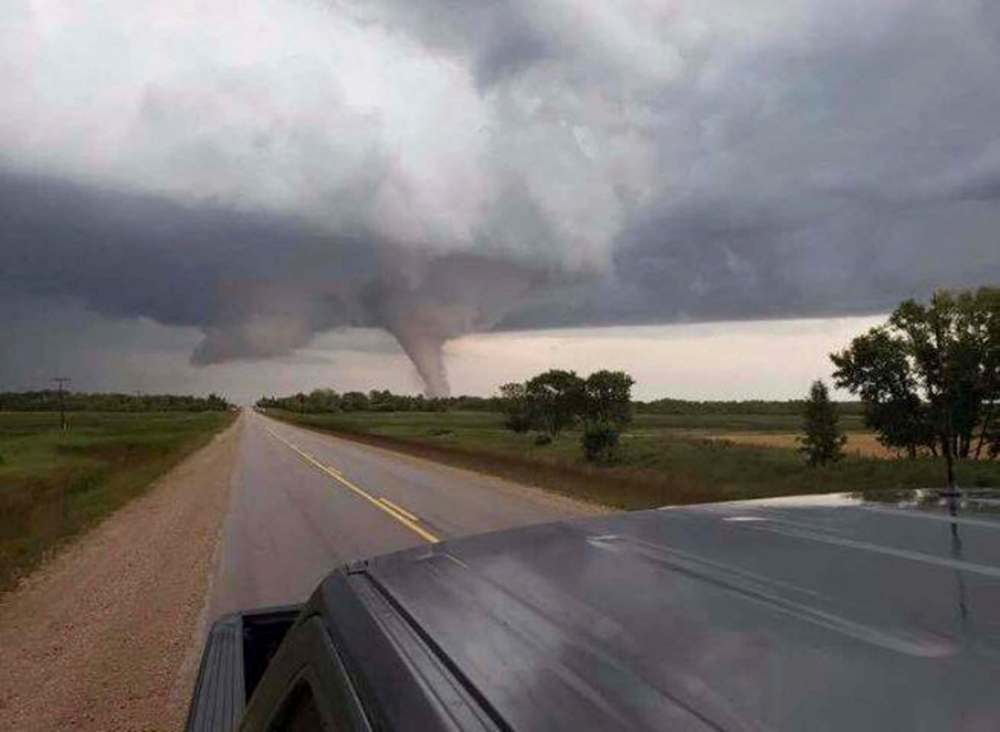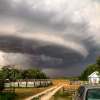Twister more severe than initially thought: Environment Canada
Advertisement
Read this article for free:
or
Already have an account? Log in here »
To continue reading, please subscribe:
Monthly Digital Subscription
$0 for the first 4 weeks*
- Enjoy unlimited reading on winnipegfreepress.com
- Read the E-Edition, our digital replica newspaper
- Access News Break, our award-winning app
- Play interactive puzzles
*No charge for 4 weeks then price increases to the regular rate of $19.00 plus GST every four weeks. Offer available to new and qualified returning subscribers only. Cancel any time.
Monthly Digital Subscription
$4.75/week*
- Enjoy unlimited reading on winnipegfreepress.com
- Read the E-Edition, our digital replica newspaper
- Access News Break, our award-winning app
- Play interactive puzzles
*Billed as $19 plus GST every four weeks. Cancel any time.
To continue reading, please subscribe:
Add Free Press access to your Brandon Sun subscription for only an additional
$1 for the first 4 weeks*
*Your next subscription payment will increase by $1.00 and you will be charged $16.99 plus GST for four weeks. After four weeks, your payment will increase to $23.99 plus GST every four weeks.
Read unlimited articles for free today:
or
Already have an account? Log in here »
Hey there, time traveller!
This article was published 07/08/2018 (2689 days ago), so information in it may no longer be current.
Deadly tornado: A Category 4 tornado tore through rural Manitoba Friday night, killing one and sending two to hospital with injuries.
Jack Furrie, 77, died after the twister touched down around 8:30 p.m. Friday in the municipality of Alonsa, located on the west side of Lake Manitoba, about 200 kilometres northwest of Winnipeg. An elderly couple was also injured when a wall in their house caved in.
Furrie’s death marked the first tornado fatality in Canada since a man died in the 2011 natural disaster in Goderich, Ont.

The Friday twister was on the ground for 45 minutes in Alonsa, creating mass destruction at Margaret Bruce Beach and the surrounding areas; it left behind a swath of tree damage spanning 800 metres.
Environment Canada has deemed the event a four out of five on the tornado scale. The rating means winds were around 280 km/h, said Natalie Hasell, a warning preparedness meteorologist at the weather agency.
The tornado was initially rated as a Category 3, but Hasell said Monday afternoon they realized it was more severe when they combed over more information.
Hasell said it’s lucky there was only one death.
“We’ve been through a few tornadoes where I’ve seen a few trailers flipped and the tops of cabins off, but this one is pretty extensive. There’s a truck that was thrown a good 200 feet into the lake,” said Chris Thorleifson, a local resident who hid from the storm in his cabin at nearby Vakker Beach. “It’s pretty amazing the damage it did.”
Tornado victim Jack Furrie: The 77-year-old who died in Friday’s tornado was a dedicated teacher and generous man who was well known in his community, Furrie’s family and friends say.
He was “a good, kind, smart, funny generous man,” his grandson Kelly Brown said.
His house was demolished in the tornado; only the foundation remained Saturday.
Furrie lived in a house at the end of a gravel road just off Bluff Creek Road with his dog Brandy when he died. Brown said Saturday the house is “unrecognizable” after the twister. “It doesn’t even look like the place I grew up,” said Brown, who was raised in the area by his grandparents.
Furrie worked as a teacher in Sandy Bay for more than 25 years. A former colleague said he was dedicated to his job and even came back to volunteer after his retirement.
“He lived a good life and he was well liked,” Brown said about his grandfather. “He’ll be missed.”
What people saw: Nancy Buchanan recalls that Friday was “a nice day” — until her family spotted dark clouds rolling in when they went out for a swim at Margaret Bruce Beach that evening.
At first they thought it was a rainstorm, she said. Hail pellets started coming down as Buchanan, her husband and their nine-year-old son trekked back to the trailer. Dry from the storm, she said they looked outside their window to see people pointing at the sky. That’s when she said they realized they needed to get in their car and drive away quickly.
“At one point, there was actually a rainbow inside. (The funnel cloud) looked kind of pink, but for the most part it was black and it was huge.”
The twister sounded “like a freight train,” she added. Others heard the sound of their engines as they fled the scene. Laura Cabak of Winnipeg said she heard the sound of children screaming.
Cabak and 13 family members, including seven children, hid in the basement of their cabin when they saw the twister. They “dog-piled” into a heap in the basement as the vicious winds swirled outside.
Their family cabin lifted into the air; only the basement remained.
The cleanup: Structures were gone, trees had lost their leaves, cows had been flung around, tractors had flipped, hydro poles were down and a truck and bales of hay were floating in the lake after the tornado passed through.
When Amaranth fire chief Logan Dumanske, arrived on the scene Friday night, he said that even in the darkness, they could see immense damage. “It looked like the movie Twister,” Dumanske said, adding he’s never seen such damage while on duty.
It was “a very, very extensive repair,” said Scott Powell of Manitoba Hydro.
Hydro crews from Dauphin, Swan River, Neepawa, Russell, Virden and Brandon helped clear and replace broken lines and get rid of trees, he said. While 280 customers had power outages, the majority got their power back by late afternoon Saturday; around 30 others had power by Saturday night.
What’s next for Alonsa: Area residents told the Free Press that unreliable, and for some, non-existent, cellphone service in Alonsa is the norm. The poor connections left many unprepared, having to rely on gloomy clouds approaching as an evacuation sign because they didn’t receive emergency weather alerts or text messages from friends and family warning them about the twister until it was too late, if ever.
“We call it the dead zone,” said Kimberley Dawn, a Winnipegger who spends summers camping on Vakker Beach in Alonsa. “You can’t have an emergency.”
Following the twister, Dawn and others are demanding rural areas get better cellphone service.
Service is just as important as food, water, recreation and roads, said Joe Masi of the Association of Manitoba Municipalities (AMM). “It’s a critical element for having safe and successful communities.”
The AMM has been lobbying for better cellphone service in rural pockets for years and has met with carriers and provincial officials about their concerns, Masi said Monday.
“For (carriers), it has to be viable from a financial point of view; they are private companies. That’s why we’ve been arguing we need more government involvement to bring service to areas where it’s not as feasible from a business perspective.”
Manitoba’s twister history: An average of nine tornadoes touch down in Manitoba every year. So far, in 2018, there have been seven, Environment Canada meteorologist Justin Share told the Free Press Monday.
The majority of tornadoes take place in the summer, from May to September, he said; the ideal day for twisters to form in the Prairies is around July 15. Hot and humid weather is perfect for unstable weather, he added.
The last fatal tornado in the province took place in 2006 at a campground in Gull Lake, 85 km northeast of Winnipeg. A woman was killed and her husband was injured in the Aug. 5, 2006, storm.
Environment Canada said there have only been two tornado fatalities, including the 77-year-old who died in Alonsa this weekend, in Manitoba since 1980.
— Maggie Macintosh, with files from the Brandon Sun
History
Updated on Tuesday, August 7, 2018 6:16 AM CDT: Photo added.




